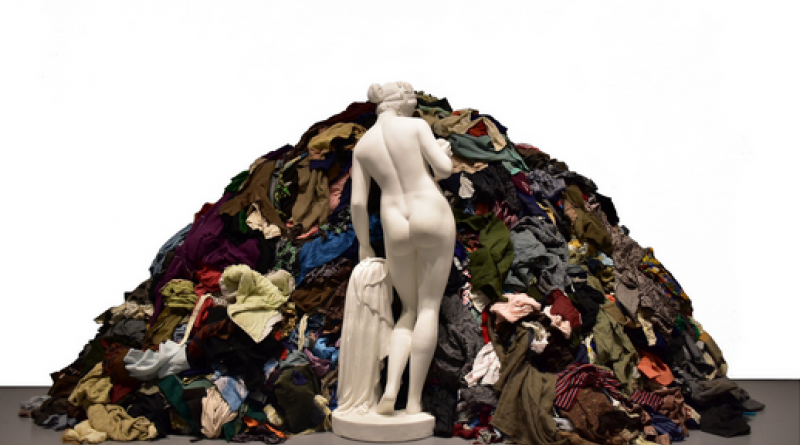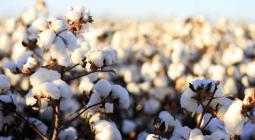The Status Quo of Sustainable Fashion.

Sustainability is trending in the fashion industry. But what’s behind the PR slogans of the big brands promoting textile recycling? And where lie the chances and barriers for change? Facts, figures, and opinions.
We need to work proactively to address critical environmental, social and ethical challenges to secure the future of our planet, and our industry,” states the leadership forum Global Fashion Agenda. In the era of Fridays for Future, sustainability has risen on the corporate agenda and is now a matter for senior management, as the fashion industry is coming under increasing pressure to translate its words into action.
But in contrast to the self-confident PR slogans that promote sustainable fashion collections, a lot of companies are rather reserved when it comes to concrete facts and figures on sustainability efforts. The “Fashion Transparency Index 2019” surveyed 200 companies about their measures regarding social and environmental standards. Adidas, Reebok, and Patagonia came first on the scale with a transparency rate of 64 percent. Esprit and H&M followed by 61 percent.
The report states: “While major brands are taking important steps towards supply chain transparency, we still miss detailed information on the results and impacts of their efforts. We see very little information and data disclosed about the purchasing practices of these leading brands and retailers, begging the question: what are brands doing to be responsible business partners to their suppliers?” According to the report, companies still operate in an opaque manner, which is a great barrier to change. “Human rights abuses, gender inequality, and environmental degradation remain rife, and we know that exploitation thrives in hidden places.”
The Pulse of the Fashion Industry study published by the Global Fashion Agenda in collaboration with the Boston Consulting Group found that 40% of all fashion companies have not even started to take sustainability seriously by setting goals and restructuring their supply chain. Among the remaining 60%, much of the improvement happens in small businesses (or those with less than $100 million in annual revenue, which includes many startups) and mid-sized businesses (with less than $1 billion in yearly revenue). Among the most significant market participants, who generate billions of dollars in revenue each year, the pace of improvement has stalled, while the growth of the industry further accelerates, increasing by 4 to 5 percent per year. By 2030, it will generate 3.3 trillion dollars in sales annually, making the fashion industry one of the fastest-growing sectors in the world. Given these figures, the sustainability efforts of fast fashion giants just seem like a drop in the ocean.
The industry’s environmental footprint is enormous. Textile production, including cotton cultivation, consumes 93 billion cubic meters of water per year. Textile dyeing accounts for 20 percent of industrial water pollution worldwide. A report by the Ellen MacArthur Foundation found that the production and distribution of clothing released 1.2 billion tons of CO₂ into the atmosphere in 2015 alone. The fashion industry produces more carbon dioxide than all international flights and maritime shipping combined.
Reuse, Repair, Recycle: The Circular Economy
At the numerous summits throughout the year, the industry discusses sustainability issues and climate change. The best-known event is the Copenhagen Fashion Summit, which takes place every year in May. Here, one term, in particular, dominated the panels: the circular economy, also known as “Cradle to Cradle.” It describes an economic system in which products do not end up in landfills at the end of their life but continue to live on as new goods. The concept distinguishes between a technical and a biological cycle. Already the product design takes into account that the various components can be separated again in the recycling process.
The material must be wholly recyclable or returned to the biological cycle as a nutrient. Other than dismantle, produce, and dispose that describes our current linear model, the circular economy is all about reuse, repair, and recycle — two opposing concepts with different effects on resource consumption and environmental impacts.
Watch the video here.
In a circular economy, waste becomes a resource — a tempting idea, especially for the fast fashion industry. Discarded clothing, of which there are 11.9 million tons per year in the USA alone, could be transformed into new fashion trends. That would save resources and a lot of money. And it does not contradict economic goals; it supports them. But there is still a long way to go.
Today, the recycling rate of all materials in the textile industry worldwide is only 13 percent. Less than one percent is used to make new garments. Most old clothes are shredded and processed into rags, insulating materials, or fillers. The so-called fiber-to-fiber recycling, which spins new yarn from old apparel, is reaching its technological limits because shirts, dresses, and trousers consist of different fiber blends. “A piece of clothing is partly made of elastane, cotton, and polyester,” explains Daniel Bücher, researcher in textile engineering at the Institute of Textile Technology (ITA) at RWTH Aachen University in Germany.
“Separating these material mixes is extremely difficult and expensive. One possibility would be to produce clothing using only one material. However, this would be at the expense of wearing comfort, aesthetics, variety, and ease of care. In the end, fashion companies would not be able to recycle clothing endlessly, as every recycling process reduces the quality of the fibers. Sooner or later, they have to add new raw materials.”
Another challenge is that collecting and recycling discarded clothing would still consume large amounts of energy. Supporters of the circular economy, therefore, rely on a breakthrough in the field of renewables. Francesco La Camera, head of the International Renewable Energy Agency (IRENA), is optimistic: “By the year 2050, 86 percent of the world’s electricity could come from green sources”, he says. But he also warned that the expansion of renewables must accelerate massively. The installation of wind and solar energy has to take place six times faster than before.
Today, the circular economy still has its technological limits, but the C2C principle is also an important approach that can make a crucial contribution to sustainability in the future. “But to solve the numerous challenges of a highly globalized industry with non-transparent supply chains such as the fashion industry, we need more complex solutions,” says Bücher.
Textiles account for 15 percent of global plastic production.
A company that takes sustainability seriously must change its business model and implement sustainability strategies along the entire value chain. The Global Fashion Agenda identifies eight priorities, including supply chain transparency, responsible use of resources and chemicals, fair working conditions, and the use of material mixes that are easier to recycle or biodegradable. “That also includes finding an alternative to the petroleum-based synthetic fiber polyester,” says Bücher. “During each washing, our clothing releases small fibers, which then enter rivers and oceans as microplastics via the sewage system.”
According to the “Plastics Atlas 2019”, a study by the German Heinrich Böll Foundation, the textile industry processed about half of all polyester fibers produced worldwide in clothing in 2017. Textiles, industrial ones included, account for 15 percent of the global plastic production.
“Polyester is so popular in the textile industry because it’s very cheap to produce. The production of synthetic fibers is much easier and faster than that of natural fibers, which first have to grow and then to be harvested and processed,” explains Bücher. “Synthetic fibers consist of polymers that serve as the main component for the production of plastics. They are melted down, spun out, stretched, and processed into a yarn. We could return to wool, cotton, silk, and linen as the most important materials for clothing, but then we would need enormous landmass and even more amounts of water.”
An alternative, according to Bücher, could be biodegradable synthetic fibers. Unlike plastic, its production doesn’t require the use of fossil fuels. It would be the best option because it combats the cause of the plastic fiber problem. To make the promising approaches from the laboratory marketable, however, there is still a great need for investment in research and development. “The textile industry would also have to work more closely together and share its research results, to establishing new technologies much quicker,” said Bücher.
Sustainable fashion means rethinking our Relationship with Clothes
For Stefan Schaltegger, economist and professor of sustainability management at Leuphana University in Lüneburg, Germany, technocratic approaches alone are not enough. “We also have to change the way we consume fashion. Slow fashion, in combination with innovation, is more promising. Anything that extends the lifespan of a garment makes more ecological sense than maintaining the fast fashion model and only reducing its impact through recycling.”
To stop the disposable culture of fashion, we have to rethink our relationship with the clothes we wear. Or, as the trend forecaster Li Edelkoort puts it: “Garments are offered cheaper than a sandwich. Prices profess that these clothes are to be thrown away, discarded, and forgotten before being loved and savored, teaching young consumers that fashion has no value.”
To counter the fast-fashion approach, more and more business models have emerged that focus on the conscious consumption of clothing. The range extends from rental services and second-hand platforms to labels that exclusively sell timeless collections to repair services. The New York startup Denim Therapy extends the life of people’s favorite jeans by fixing holes and modernizing its design. Second-hand platform Vestiaire Collective offers high fashion for less, and the e-commerce platform Not Just A Label follows a slow fashion approach. It provides independent designers from 150 countries the opportunity to present their collections and sell them without intermediaries. The German label Armedangels also focuses on slow fashion. At every point in the supply chain, Armedangels adheres to strict standards in terms of ecology and fairness towards its producers and is certified with the Global Organic Textile Standard (GOTS).
“The solutions mentioned, based on a combination of innovative technologies and new business models, describe the triad of efficiency, sufficiency, and consistency,” explains Schaltegger. Efficiency means “make more out of less,” focusing on productive use of matter and energy. Sufficiency represents changing our lifestyles to conserve resources and questioning our consumption habits. And the consistency strategy describes the harmonic coexistence of technology and nature according to the circular economy and its Cradle-to-Cradle approach. “In the end, only an intelligent combination of efficiency, sufficiency, and consistency strategies tailored to each company will lead to greater sustainability in the long term.”
11 March 2020
Medium





